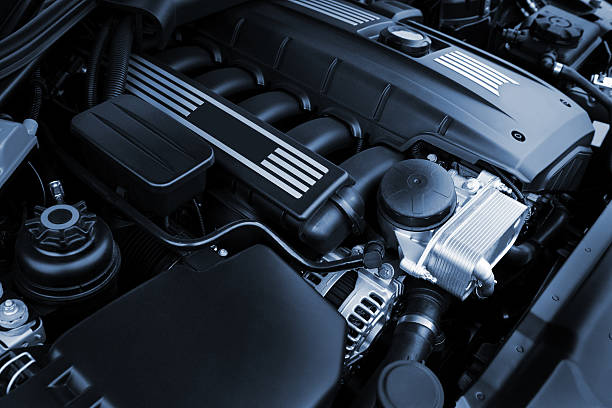Hydraulic Power Steering: The Unsung Hero of Driving Comfort
Imagine gripping the wheel of a classic muscle car, its raw power thrumming through your hands as you navigate a winding mountain road. Now picture the same scenario, but with effortless control at your fingertips. This stark contrast highlights the often-overlooked marvel of hydraulic power steering, a technology that has fundamentally transformed the driving experience. In this deep dive, we'll explore the intricate mechanics, historical significance, and enduring relevance of this automotive innovation that continues to shape our relationship with the road.

The concept of power-assisted steering wasn’t entirely new. Experiments dated back to the early 1900s, with various mechanical and electrical systems attempted. However, it was the hydraulic approach that finally struck the right balance of effectiveness, reliability, and cost-efficiency.
How Hydraulic Power Steering Works
At its core, hydraulic power steering is an elegant marriage of mechanical and fluid dynamics principles. The system consists of several key components: a pump driven by the engine, a fluid reservoir, high-pressure hoses, and a steering gear with a hydraulic cylinder.
When the driver turns the steering wheel, a rotary valve in the steering gear opens, allowing pressurized fluid to flow into the appropriate side of the hydraulic cylinder. This fluid pressure assists in moving the steering linkage, effectively multiplying the force applied by the driver.
The beauty of this system lies in its proportional response. The more force applied to the steering wheel, the more assistance the system provides. This ensures that the driver maintains a consistent feel and control over the vehicle’s direction.
The Impact on Vehicle Design and Performance
The introduction of hydraulic power steering had far-reaching effects on automotive design and performance. With the reduced effort required to steer, designers were freed to create vehicles with wider tires and more aggressive steering geometries, enhancing both handling and stability.
Moreover, power steering allowed for higher steering ratios, meaning fewer turns of the steering wheel were needed to achieve full lock. This improved maneuverability, especially in tight urban environments and parking scenarios.
The technology also played a crucial role in the evolution of vehicle safety. By reducing driver fatigue and improving control, particularly at low speeds, power steering contributed to a decrease in accidents related to steering difficulties.
Refinement and Evolution
As with any technology, hydraulic power steering has undergone significant refinement since its widespread adoption. Early systems were often criticized for being overly assisted, leading to a disconnected feeling from the road. Engineers responded by fine-tuning the hydraulic valves and introducing variable-assist systems that provide more support at lower speeds and less at highway velocities.
Another area of improvement has been efficiency. Traditional hydraulic systems continuously pump fluid, even when no steering input is required, leading to a constant draw on engine power. Modern systems often incorporate electro-hydraulic pumps that operate on-demand, reducing parasitic losses and improving fuel economy.
The Enduring Legacy in a Changing Landscape
While electric power steering systems have gained prominence in recent years, particularly in smaller vehicles and those prioritizing fuel efficiency, hydraulic power steering continues to hold its ground in certain segments of the automotive market.
Large trucks, heavy-duty vehicles, and high-performance cars often still rely on hydraulic systems for their superior ability to handle heavy loads and provide consistent feedback. The robust nature of hydraulic power steering also makes it a preferred choice in challenging environments where reliability is paramount.
Moreover, the tactile feedback and road feel provided by a well-tuned hydraulic system remain benchmarks against which newer technologies are measured. Many driving enthusiasts argue that the hydraulic approach offers a more natural and connected driving experience compared to electric alternatives.
Looking to the Future
As the automotive industry continues its march towards electrification and autonomy, the role of steering systems is evolving. However, the principles and benefits established by hydraulic power steering continue to inform the development of new technologies.
Steer-by-wire systems, which completely decouple the steering wheel from the road wheels, aim to provide the best of both worlds: the effortless control of power steering with the flexibility to adjust feedback and resistance based on driving conditions or personal preference.
Meanwhile, in the realm of autonomous vehicles, the lessons learned from decades of hydraulic power steering development are being applied to create robust and responsive steering systems capable of navigating complex environments without human input.
In conclusion, hydraulic power steering stands as a testament to automotive engineering ingenuity. Its impact extends far beyond the simple act of turning a wheel, having shaped vehicle design, safety, and the very nature of our interaction with automobiles. As we look to the future of mobility, the legacy of this unsung hero continues to steer the course of automotive innovation.





